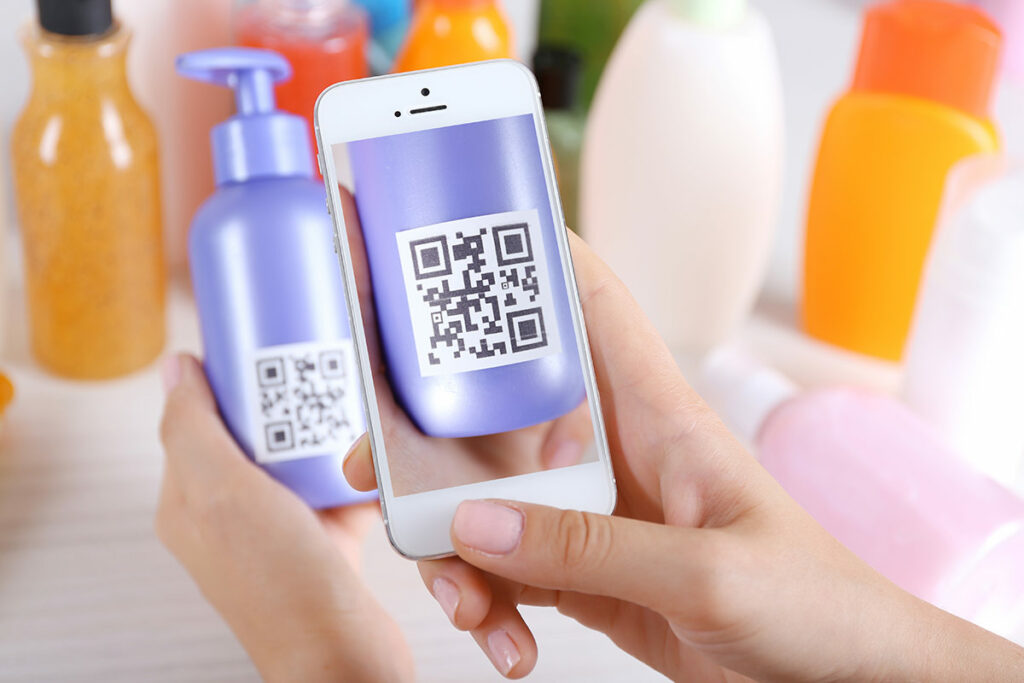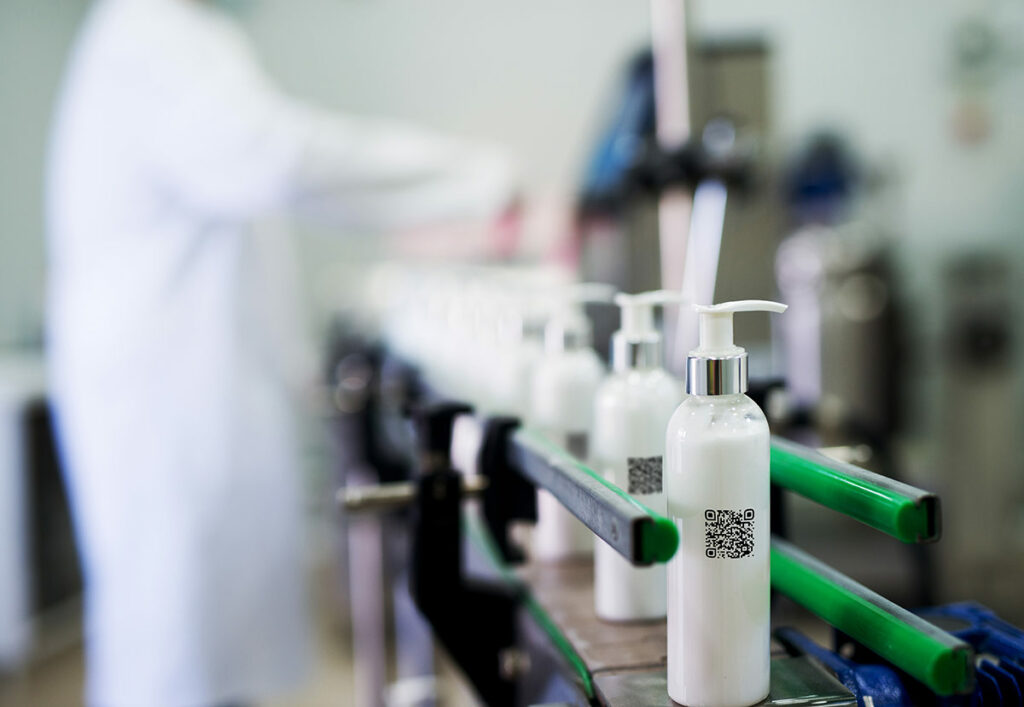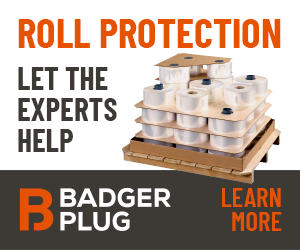Seeing It Through

The same QR code that assures a product’s transparent trip along a supply chain also can lead consumers to additional product information, promotions or feedback surveys. Image Courtesy of Antares Vision Group.
The Five Levels of Comprehensive Product Traceability
By Monica Coffano, Key Account Manager – Cosmetics for Antares Vision Group
$40 billion in foods and beverages. $90 billion in cosmetics. A staggering $431 billion in pharmaceuticals.
These figures don’t reflect the total size of those mission-critical markets, but rather the counterfeit goods pilfered from their supply chains. Frighteningly, those are just three of countless sectors where unauthorized diversion is an unmitigated disaster.
It’s little wonder why brand owners across high-leverage industries – not only those above but also electronics components, luxury goods and household items – are coming to embrace comprehensive supply chain transparency. Legislators and regulators are following suit, with cross-category digital product identification requirements pending in several geographies.
But understanding a system’s value and understanding the system itself are two different things. Let’s shed some light on the tools that shed light on product lifespans, from pre-production through final sale and beyond. Following is an overview of the five levels of product traceability and transparency.
Line level
A product’s lifecycle commences at its place of manufacture. Sometimes, traceability is integrated into the product itself; more often, traceability insignia such as QR codes are applied to packaging following upstream packing and inspection.
Such markers provide items with unique identifiers, which are assigned and logged by software and, ideally, scanned back into the system for quality control purposes – the first of countless scans the product will undergo along its supply chain journey.
These unique identifiers also can create parent-child relationships between, for example, a case of items and individual units. The goal is safeguarding not only against gray market diversion but potential recalls, since items are now grouped into easily trackable, retrievable groupings.
Factory level
The next step up the traceability staircase is monitoring, tracking and analyzing all relevant plant-level activities. This phase focuses not on the product but its production environment. While individual product wellbeing and integrity is assured through traceability tactics, the wellbeing and integrity of a manufacturing facility is achieved via exacting quality control and perpetual process optimization.
It’s amazing what can be accomplished when precision camera systems are paired with sophisticated software. Their combination allows brand owners to collect valuable real-time production data via the same cameras used for inspection and elsewhere, generating dashboard-friendly metrics that let operators fix small issues before they become big ones.
Critically, many systems “learn” as they go, leading to efficiencies like improved production scheduling that further manufacturing’s machinery mantra: uptime is money. Gone are the days when implementing traceability elements slows production down; conversely, today’s systems actually improve line speeds, capacity, and other performance indicators.

Increasingly, brand owners’ willingness to employ comprehensive traceability systems will serve as a key differentiator, elevating those with a crystal-clear bird’s eye view from those who stubbornly insist upon flying blind. Image Courtesy of Antares Vision Group.
Warehouse level
With our product registered into a traceability system, and the facility running at peak performance, we come to the next stage: warehousing.
Warehouses are… well, warehouses. They vary in size, shape, protocols, personnel skills, and orderliness. They can be pristine and practical, or dishevelled mazes that hopefully have methods to their madness.
A properly implemented traceability solution takes these wildcards and renders them marvellously moot. Savvy software suites pair with camera systems and handheld, system-linked scanners to seamlessly manage both the inter- and intra-facility movement of goods – everything from receiving and shipping to materials tracking and remaining inventory.
The point is that the product’s whereabouts are accounted for at all times in a digitally monitored, verifiably transparent fashion. Warehousing traceability solutions help make a product’s often zigzag lifespan refreshingly linear.
Enterprise level
This penultimate level encompasses software solutions that streamline regulatory compliance management, including oversight of both serialized and non-serialized products and assets.
Unsurprisingly, many solutions associated with enterprise-level compliance management stem from the pharmaceutical industry, whose recordkeeping and reporting mandates are the most stringent. Medicines are both life-saving and lucrative, meaning brand owners and governments are particularly motivated to prevent contamination or counterfeiting.
Increasingly, though, private and public players are aligning behind an ethos of “traceability technology exists… so use it.” For example, the transparent lifespan afforded by traceability allows distributors of second-hand luxury goods to certify product authenticity. Many of us have certified pre-owned vehicles; more and more, we’ll also have certified pre-owned handbags, jewelry and clothing.
Governments are also encouraging cross-category serialization. The European Union plans to require high-leverage items, including high-end cosmetics, to acquire “Digital Product Passports.” Notably, a key driver is sustainability, since the same tools providing supply chain transparency also allow, for example, a car battery to have digitally-recovered instructions for ecofriendly repurposing.
Supply chain level
The last level tracks products not only through their lifespans, but also the components and raw materials stages that precede their very existence. The supply chain level comprises an array of inspection equipment, cameras, software and even consumer-held smartphones providing transparency (a) before a product is even a product, and (b) following its arrival on store shelves and graduation into consumer possession.
A product is only as effective as the sum of its parts; supply chain level traceability allows for materials and components comprising a product to themselves be tracked, traced and verified. Brand owners guarantee products to customers; now, vendors can guarantee materials and components to brand owners.
At the other end of the lifecycle, supply chain level traceability offers enriching customer experiences that inform brand owners. The same QR code that assures a product’s transparent trip along a supply chain also can lead consumers to additional product information, promotions, or feedback surveys.
Essentially, supply chain traceability tools fill in any blanks, eliminating any hazy gaps in the visibility journey. This is especially important in markets prone not only to counterfeiting but in-transit damage. For example, with cosmetics, comprehensive transparency not only prevents original product diversion and counterfeit introduction, but reveals potentially damaging transit issues – for instance, remaining on a ship with no temperature control in a hot, humid climate for longer than a product can stand.
Conclusion
Advancements in product transparency technology mean brand owners need never lose sight of their high-leverage goods. These tools are not only feasible but convenient and cost-effective, tightening control over a product’s market journey even while streamlining production and transit practices through data capture and metrics analysis. Increasingly, brand owners’ willingness to employ comprehensive traceability systems will serve as key differentiators, elevating those with a crystal-clear bird’s eye view from those who stubbornly insist upon flying blind.
About the Author
Monica Coffano is Key Account Manager – Cosmetics for Antares Vision Group, a leading global provider of hardware and software track and trace solutions, and a prominent player in inspection systems and smart data management. The company is a technological enabler of supply chain transparency and sustainable transition. www.antaresvision.com







